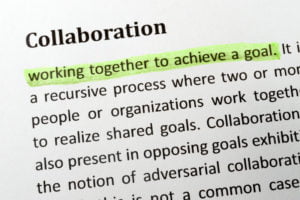 Early in my journey, I operated under many assumptions. One particular one (embarrassing now) was that having exact processes and workflows with good documentation would be enough. Ah, silly me, depending so heavily on best practices. Thank goodness for the patient mentors and co-workers that have helped me learn better along the way.
Early in my journey, I operated under many assumptions. One particular one (embarrassing now) was that having exact processes and workflows with good documentation would be enough. Ah, silly me, depending so heavily on best practices. Thank goodness for the patient mentors and co-workers that have helped me learn better along the way.
I’ve since realized that while “Best Practices” work fairly well in a simple system – they’ll even get you through some complicated domains – they are of little use when dancing with complexity. And the reality of today’s software development is by and far complex.
I’ve come to appreciate that effective, high performance teamwork requires so much more than process and best practices. What does it take? For me, I find good clues in the first value pair of the Manifesto:
- Individuals and interactions over processes and tools
A few key ingredients that help make interactions effective include: collaboration and communication.
In this post I do a bit of a mash up: using some ideas from Zuzi Sochova’s kindle book: The Great Scrum Master while looking through the four lenses of Integral Agile from Lyssa Adkins and Micheal Spayd.
Four Lenses for Agile Communication and Collaboration
The solution of a problem lies in the understanding of the problem... Share on XThe four lenses of Integral Agile – I,We, It, and Its – provide frames of reference that are useful for any situation, not just those we encounter in agile software development.
Me, Myself, and I
“I” explores the individual. The basic building block of a team and at least one part of an interaction.
The “I” lens looks at one’s inner world, motivations and psychological view points. In the context of an agile mindset things like values, craftsmanship, engagement, happiness are all important.
Additional elements include: a willingness (or lack thereof) to take risks, experiment, step into a servant leadership role, to tolerate ambiguity.
When examining the communication aspect of interaction from the “I” view the following questions might arise.
When Speaking
- Do I respect differing opinions?
- How important is “this” to the group, now? (aka should I not be speaking but instead listening?)
When Listening
- How good is my own understanding of what I’m hearing?
- Do I want to raise awareness at a different level, e.g. the environment?
Feelings
- Do I / can I speak up when I disagree?
- Am I open about my feelings?
- Do I ensure mutual respect in communications?
- Am I mindful of the ghosts of the past (Can I name them? Should I / can I make them visible?)
Positivity / Curiosity
- Am I able to never (or seldom) take things personally?
- Can I search for true understanding?
- Do I believe everybody is right, even if only partially?
You + Me = We
“We” is the lens that looks at relationships, the interactions between individuals and helps us see if there is a real “we” with shared understanding.
In the past, I always used to be looking for answers... Share on XSeeing
- What do I express with my body language?
- What do I interpret from others’ body language and micro expressions?
- What are the emotions present in the group?
- Can I adjust my style as a result of my observations of others I am engaged with?
Understanding
- How good is everyone’s understanding?
- Do we all use clean language?
- Is our messaging clear?
- Are all involved ready to understand?
- Is any one of us pushing too hard when we need to pause?
- Is anyone of us one step ahead? (Not necessarily a bad thing)
- Do we have a shared vision, purpose and culture?
- Do we understand and agree on our respective roles?
- How informed are the individuals regarding tasks that have interdependencies?
Patterns
- Are we able collectively to recognize patterns of behavior?
- Are we able to break non-useful or dysfunctional patterns?
- Can we help others out of their patterns?
- How do we deal with (or avoid) conflict?
- Are our technical practices clear and understood?
Remembering
- What is our shared past?
- What are our stories – the tales we tell?
- Are we haunted by our previous conflict competency?
Safety
- Do we recognize any toxins that we need to deal with?
- Are there elements of blame or defensiveness that we need to address?
- Are there high levels of trust?
- Do we have antidotes/booster shots for the above as needed?
Meet Cousin It
“It” examines things like metrics, methods, and practices – frameworks like Kanban, Scrum, XP – the processes and tools I was so fond off early on in my journey.
To ask the 'right' question is far more important than to receive the answer... Share on XShared Understanding
- How well understood and communicated are the roles, practices, and ceremonies?
- Is there agreement on the metrics we use to create our feedback loops (See Metrics for Agile Teams)
Its about the Environment
“Its” reveals the systems, the interactions between teams. Things like the value streams and scaling frameworks, the operational and organizational structures such as Holacracy, Sociocracy, Taylorism (Gasp) and system thinking.
Environmental Questions
- How can I help others?
- Can I see issues through the eyes of others?
- Do I see others as people or as roles?
- How does information and communication flow?
- Are impediments made visible? Are they being worked on?
- How granular are the work units, how solid are the hand offs?
- Do interacting work groups share common values and principles?
- What are the feedback loops in the system? (See Team Happiness Metrics)?
More Questions than Answers Regarding Agile Communication and Collaboration
Realizing this post about agile communication and collaboration is mostly questions, (was my warning in the title – Lines of Inquiry – too subtle?) I’ll wrap with a few of my favorite quotes about finding answers.
“A solid answer to everything is not necessary. Blurry concepts influence one to focus, but postulated clarity influences arrogance.” – Criss Jami, Salomé
“To ask the ‘right’ question is far more important than to receive the answer. The solution of a problem lies in the understanding of the problem; the answer is not outside the problem, it is in the problem.” – Jiddu Krishnamurti
“In the past, I always used to be looking for answers. Today, I know there are only questions. So I just live.” – Sarah Brightman
Peace.
